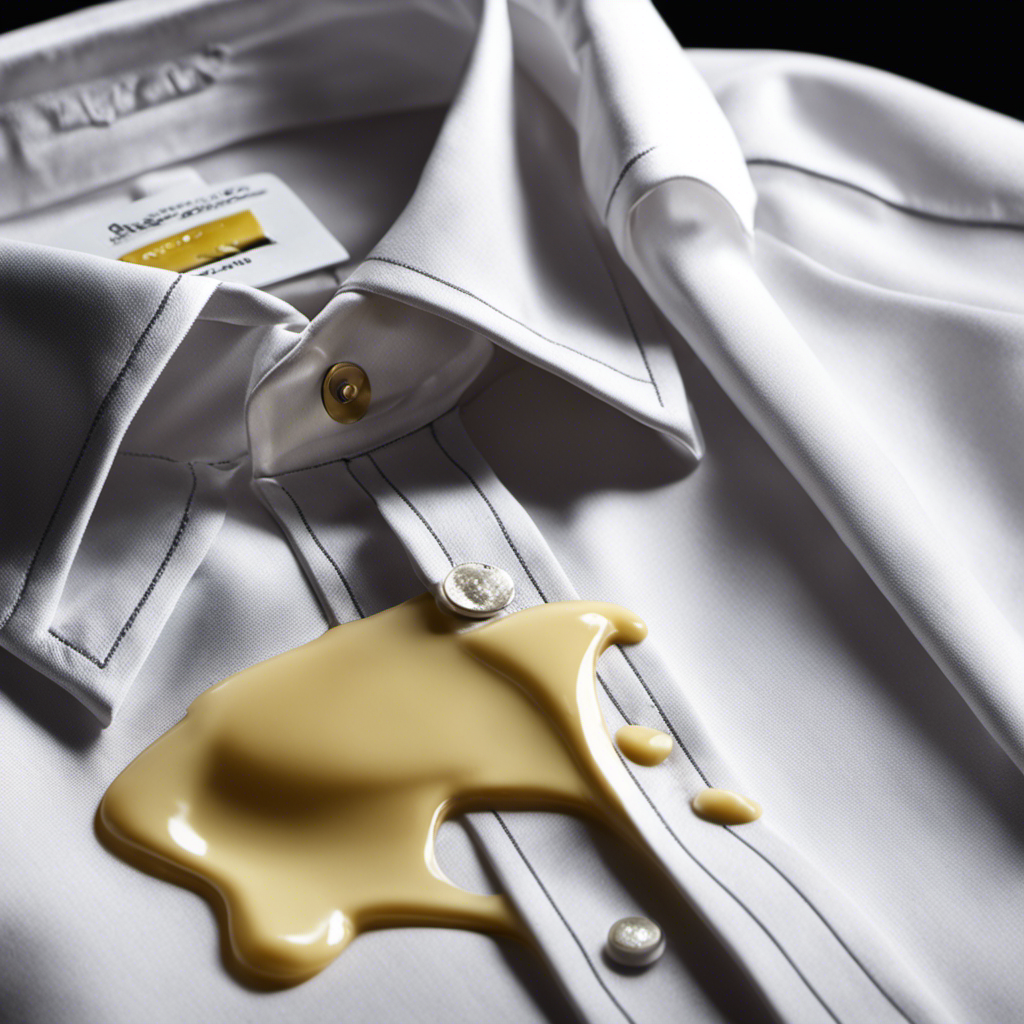I’ve always struggled with keeping my butter soft in the fridge. It’s frustrating when you want to spread it on toast or use it in baking, but it’s rock hard. That’s why I did some research and discovered some simple ways to keep your butter soft and spreadable.
In this article, I’ll share the science behind butter hardening, the proper way to store it in the fridge, and innovative techniques for quickly softening it. Plus, I’ll provide some additional tips and tricks for soft, spreadable butter.
Key Takeaways
- Butter hardens in the fridge due to its high fat content.
- Storing butter in airtight containers or butter keepers helps maintain its softness.
- The ideal fridge temperature for keeping butter soft is between 30-40 degrees Fahrenheit or -1 to 4 degrees Celsius.
- Innovative techniques for quickly softening butter include using a microwave and using butter bells.
Understanding the Science Behind Butter Hardening
To keep your butter soft in the fridge, you may be wondering why it hardens in the first place. The main reason behind butter hardening is its high fat content. When stored in colder temperatures, the fat molecules in butter solidify, causing it to become hard.
However, there are a few tricks you can try to keep your butter soft and spreadable. One option is to use a butter storage container specifically designed to regulate the temperature and prevent hardening. These containers are usually made of ceramic or porcelain and help maintain the butter’s texture.
Another alternative is to use butter substitutes like margarine or vegetable oil spreads, which have lower fat content and remain soft even in colder temperatures.
By understanding the science behind butter hardening and exploring different storage options or alternatives, you can ensure that your butter stays soft and ready to use.
Now, let’s move on to the next section about storing butter properly in the fridge.
Storing Butter Properly in the Fridge
One way to properly store butter in the refrigerator is by using a butter dish. By using airtight containers or butter keepers, you can maintain the freshness and softness of your butter for longer periods. These containers create a barrier between the butter and the outside air, preventing it from absorbing unwanted odors and flavors. Here’s a practical comparison of different storage methods:
| Storage Method | Pros | Cons |
|---|---|---|
| Butter Dish | Keeps butter soft and spreadable | Requires frequent cleaning |
| Airtight Container | Protects butter from external odors | May need to soften butter before use |
| Butter Keeper | Keeps butter at optimal temperature | Limited capacity for large amounts |
Choose the method that suits your needs best. Remember to keep your butter covered and refrigerated to maintain its quality and taste.
Temperature Control: The Key to Soft Butter
Maintaining a consistent temperature is crucial for keeping your butter soft and spreadable. When it comes to storing butter in the fridge, there are a few things you need to keep in mind to ensure optimal storage conditions.
First and foremost, make sure to store your butter in an airtight container. This will help prevent it from absorbing any odors from other foods in the fridge. Butter dishes and keepers are specifically designed for this purpose and can help maintain the ideal temperature.
Additionally, it’s important to keep your fridge at the right temperature. The ideal temperature for storing butter is between 30-40 degrees Fahrenheit (-1 to 4 degrees Celsius).
Innovative Techniques for Softening Butter Quickly
If you’re in a hurry to soften your butter, try using a microwave-safe bowl and heating it for a few seconds.
This microwave method is a quick and easy way to achieve soft butter in no time. Simply place the desired amount of butter in a microwave-safe bowl and heat it in short intervals, checking and stirring in between, until it reaches the desired consistency.
Be careful not to overheat the butter as it can melt or become too soft.
Another innovative technique for softening butter quickly is by using a butter bell. A butter bell is a small ceramic container that keeps butter at room temperature and ready to spread.
It works by creating an airtight seal, preventing the butter from spoiling while keeping it soft and spreadable.
Additional Tips and Tricks for Soft, Spreadable Butter
To achieve spreadable butter, you can try leaving it out at room temperature for a short while. However, if you prefer to store your butter in the fridge, there are alternative storage methods you can try to keep it soft and easily spreadable. Here are some additional tips and tricks:
-
Use a butter bell or butter keeper: These specialized containers keep the butter fresh and soft by sealing out air and moisture.
-
Try butter crocks or butter dishes: These containers have a water-filled base that creates an airtight seal, keeping the butter soft and spreadable.
-
Make compound butter: Mix softened butter with herbs, spices, or other flavorings to create a delicious spread that can be stored in the fridge and used on toast, veggies, or meats.
Frequently Asked Questions
Can I Freeze Butter to Keep It Soft for Longer Periods?
I freeze butter to keep it soft for longer periods. It’s a great alternative to using a butter dish. Just make sure to wrap it tightly in plastic wrap before freezing.
How Long Can I Keep Butter in the Fridge Before It Becomes Spoiled?
Properly storing butter in the fridge is key to preventing spoilage. Look for signs like off smells or mold to know when to discard it. Now, let’s talk about how to keep it soft.
Is It Safe to Keep Butter at Room Temperature?
Yes, it is safe to keep butter at room temperature in a butter dish. However, it should be consumed within a reasonable time frame to avoid spoilage.
What Is the Best Type of Container to Store Butter in the Fridge?
The best type of container for storing butter in the fridge is an airtight container. To prevent the butter from becoming too hard, you can also try using a butter dish or placing the butter in a ziplock bag.
Can I Use a Microwave to Soften Butter Quickly?
Can I use a microwave to soften butter quickly? Absolutely! Just pop it in for a few seconds and voila! But if you prefer alternative methods, there are other ways too.
Conclusion
In conclusion, keeping butter soft in the fridge is not a hard nut to crack. By understanding the science behind butter hardening and storing it properly at the right temperature, we can ensure a velvety smooth spread every time.
And for those moments when we need soft butter in a jiffy, innovative techniques like using warm water or a cheese grater can come to our rescue.
With these tips and tricks up our sleeves, we can effortlessly achieve the perfect buttery bliss, making our taste buds dance with delight.










